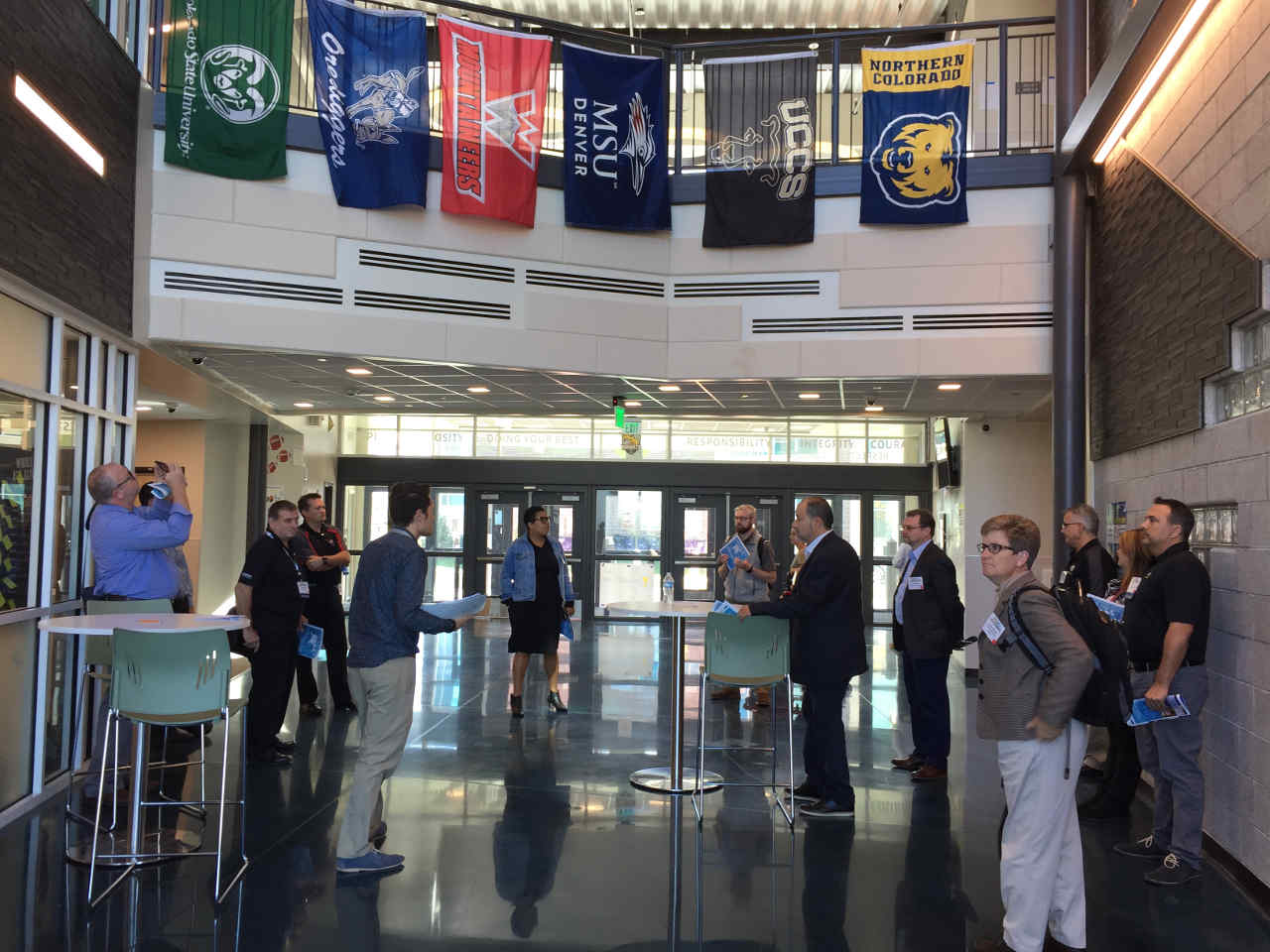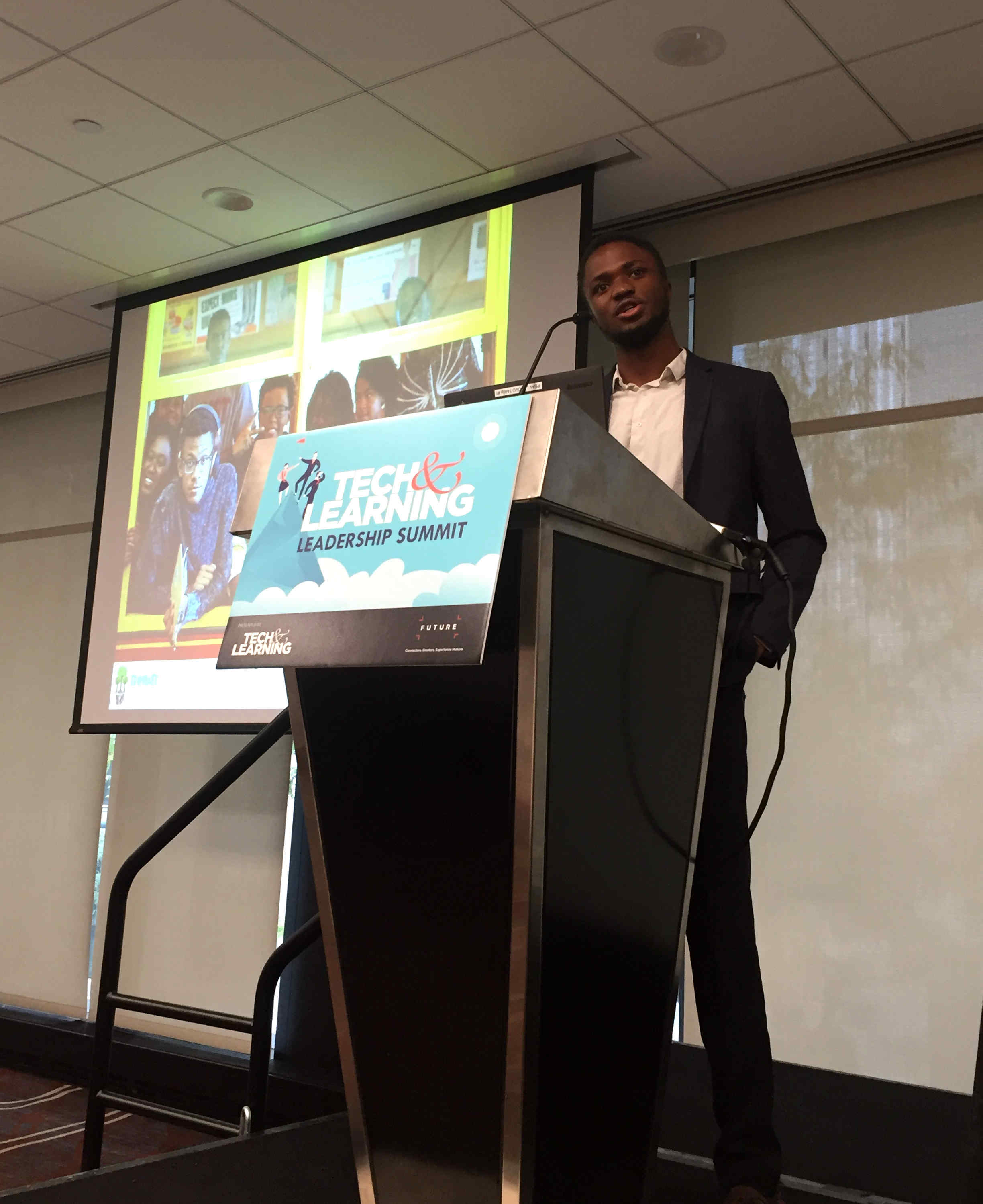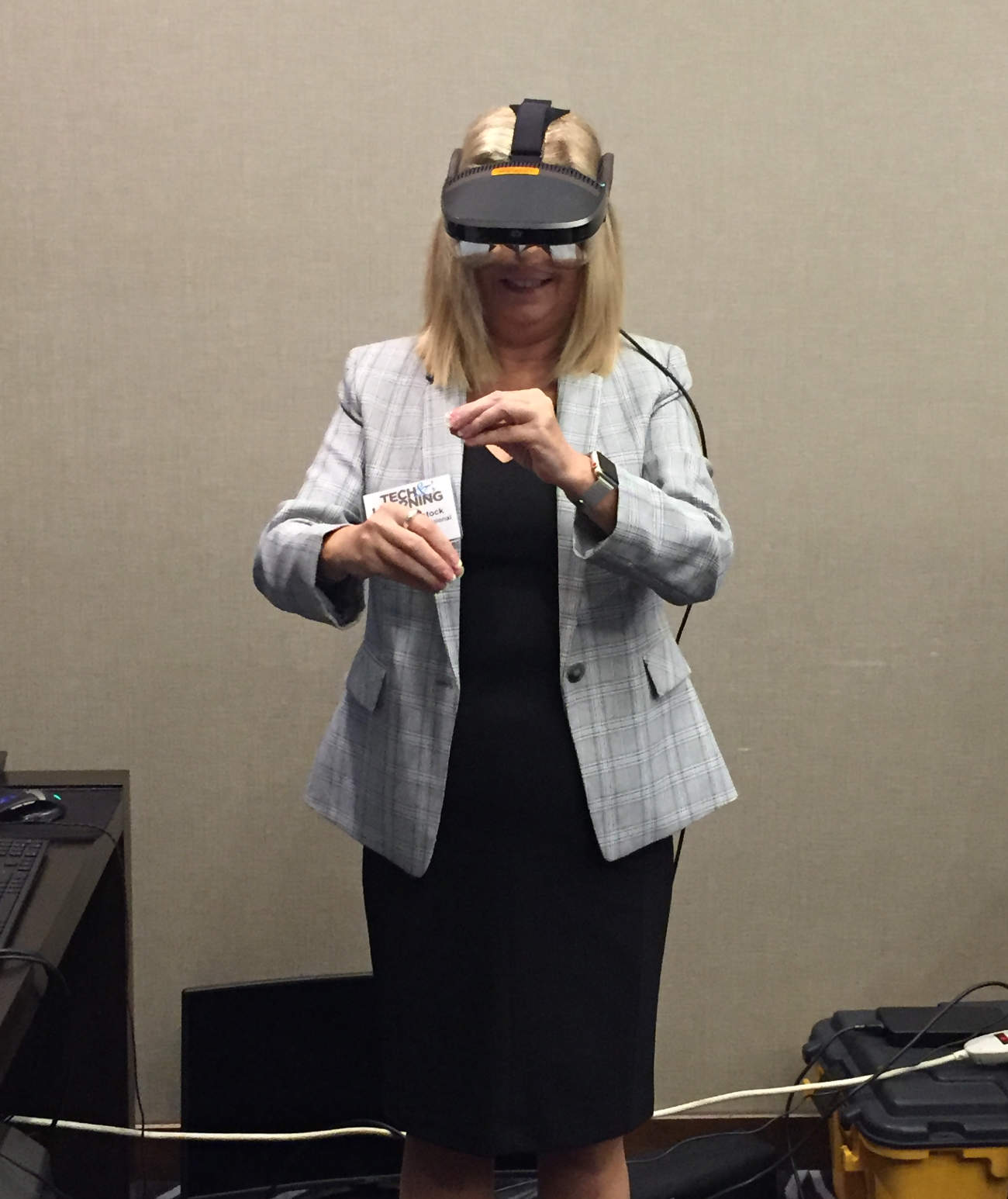FEATURE: Ed Tech Leaders Take on the Digital Equity Divide
This invitation-only event focused on sharing and learning about the many innovative solutions that district leaders are creating to close the digital equity divide.

In Denver Colorado, there are 300 days of sunshine, golf balls go 10% farther and Elvis Presley once flew to Denver Stapleton Airport just for a sandwich. This city, nicknamed the Mile-High City, welcomed 50 edtech leaders from across the country for the October 2018 Tech & Learning Leadership Summit. This invitation-only event focused on sharing and learning about the many innovative solutions that district leaders are creating to close the digital equity divide.
Seeing is believing
Respect, responsibility, integrity, courage, curiosity and doing your best are the core values of one of the country’s leading public charter STEM school districts, the DSST School District in Denver, Colorado. They opened the doors of both Green Valley Ranch High School and Conservatory Green High School, so that T&L Leadership Summit guests could observe STEM in action! While these classroom observations and conversations with students and teachers were inspiring, the most enlightening part of the tour was the Q&A session at the Conservatory Green High School with DSST edtech leaders. When asked what makes DSST unique, Scott Walker, DSST chief operating officer, said that they focus on preparing all their students not only for success in getting into college but for success during their college years and beyond. DSST does it through an integrated program that focuses on ensuring that all students have the same educational opportunities no matter their backgrounds or socioeconomic conditions. Walker stated, "we want to make sure our kids are in an integrated school that makes all the other things (college and career) possible.” Their guiding principle is that real learning happens in smaller school environments because it allows for relationship building and developing shared values.
The school visits and the panel discussions were a popular topic at the first evening’s dinner event as school and district leaders reflected on how they could bring the energy, commitment, and vision they experienced on their school visits back to their own districts.
Bridging the Equity Gap
The smell of coffee brought the attendees together for an early Saturday morning session. The always entertaining Adam Phyall, director of technology and media services in Newton County (GA) School System moderated an innovative panel of edtech professionals who shared their challenges and experiences about “working to provide equal technology access to students and school leaders of all genders, races, and economic backgrounds.”
The first panelist was Wisdom Amouzou, executive director of Empower Community High School in Aurora, Colorado. He talked about the need to reframe the “problem” around the “inequitable economic and educational systems that bar access to high-income pathways,” and how these educational systems “neither authentically value family input nor enable their participation in decision making processes.” The vision and commitment of the Empower Community High School is based on the premise that, “if you want equity to be sustainable, it has to be led by the ones most impacted.”
Tools and ideas to transform education. Sign up below.

The next panelist was Melissa Schwass, program director of ChickTech at Denver High School. ChickTech is a nonprofit dedicated to engaging women of all ages in the technology industry and increasing the number of girls and women pursuing careers in the technology world. This inspiring, dedicated edtech leader emphasized, “girls feel that they have to be perfect and can’t fail. We need to let girls be brave enough TO fail.” ChickTech believes that it is never too late to pursue love of STEM and that we need to mentor and support our girls and women to find a STEM path.
The final panelist was Sean Wybrant, an educator of digital media studies at the William J. Palmer High School in Colorado Springs. He eats, sleeps and breathes the idea that educators craft the heroes of tomorrow and that he is doing it every day in his classroom. He teaches students to think critically and solve problems through computer science and video game development. What resonated with the audience was his statement that, “if we don’t let students build the future they want to inherit, then they will inherit our future.”
Better when we do it together
The rest of the summit was spent in collaborative working groups that focused on issues that challenge us all to improve student achievement, support our educators, and ensure digital equity for all our students. The session ranged from network and infrastructure issues to data privacy, security and identity management, to redesigning classrooms and other learning spaces. All sessions were well attended and you could feel the collaborative vibe as you walked by session rooms. I have highlighted just a few of these well-crafted working group sessions.
Bradford Hubbard, assistant superintendent for curriculum and instruction in Community High School District 117 (IL), showcased how digital citizenship and critical thinking are working in tandem to build empathy and seek equity in the Digital Citizenship and Critical Thinking session. Edtech leaders such as Tianay Amat, deputy superintendent in Cincinnati (OH) Public Schools and Jose Perez, technology integration coach at NYC Department of Education, asked important questions about how schools are incorporating digital citizenship into their everyday curriculum, how we can support teachers, and where to find best practices resources. Patrick Larkin, assistant superintendent of Burlington (MA) Public Schools, provides some answers to these question in his “Minimizing the anxiety on D.C. (that’s Digital Citizenship!)” presentation.
It was all about hands-on activities in the Emerging Technologies session led by Randy Rogers, director of digital learning services in Seguin (TX) ISD and Sean Wybrant, career and technical education teacher and Colorado teacher of the year at Palmer High School in Colorado Springs. The focus was on new and emerging technologies, such as AI and VR and the impact these technologies are having in schools today and into the future. In this session, students were our teachers. We got to experiment with Cospaces Edu, a tool that allows students or schools to create their own VR experiences and content.

In the Blended and Personalized Learning session, Brian Seymour, director of instructional technology at Pickerington (OH) Local School District, talked about how his district is transforming education through use of technology and more student centered pedagogy. Stephen Woicik, technology director of Maynard (MA) Public Schools, talked about a specific goal of their 1:1 program: to eliminate the technology barrier of entry that will make creating personalized learning easier in the future. Paul Vieira, assistant superintendent of Ashland (MA) Public Schools summed up this session well by saying, “Personalized learning is learning that has been personalized to a student’s individual needs, likes, and interests. Blended learning is when technology and/or other ‘non-traditional’ methods are used to deliver the curriculum or show mastery.”
Next Steps with Lessons Learned
The exhilarating, inspiring, and motivational weekend ended with a brownie and an opportunity for all to share what they would be bringing back to their districts. Jose Perez is going back to his district to start a PLC on understanding digital equity and digital literacy as well as its effects on underprivileged communities. Andrea Tejedor, assistant superintendent for curriculum and instruction at Highlands Falls-Fort Montgomery (NY) School District is going to begin a conversation about the soft bigotry of low expectations in her district by examining biases. Shawntee Cowan, chief technology officer at Duncanville (TX) ISD, inspired by Wisdom Amouzou said that her district is going to rethink the design of schools and incorporate the voices of stakeholders. Scott Harris, technology director at Neosho (MO) School District, is committed to involving parents with decisions that affect their children when it comes to technology while Brian Seymour, said he was going to be mindful of equity when decisions are being made.
Todd Dugan, superintendent of Bunker Hill (IL) Community School District #8, summed up the Denver 2018 T&L Leadership Summit well with the statement, “1:1 is NOT the answer to digital equity.”
Eileen Belastock is director of academic technology in at the Mount Greylock Regional School District in Williamstown, Massachusetts and is a certified education technology leader (CETL).
